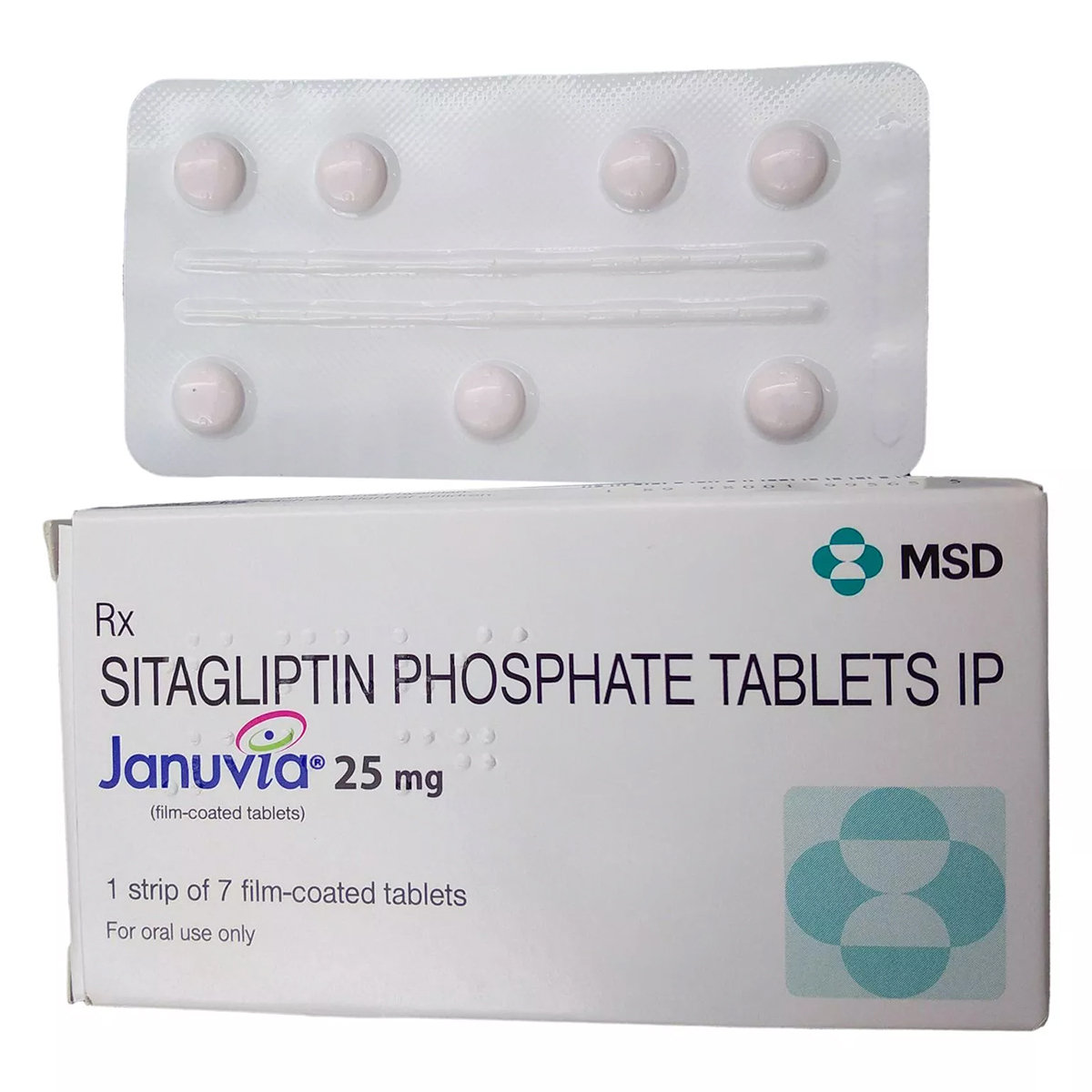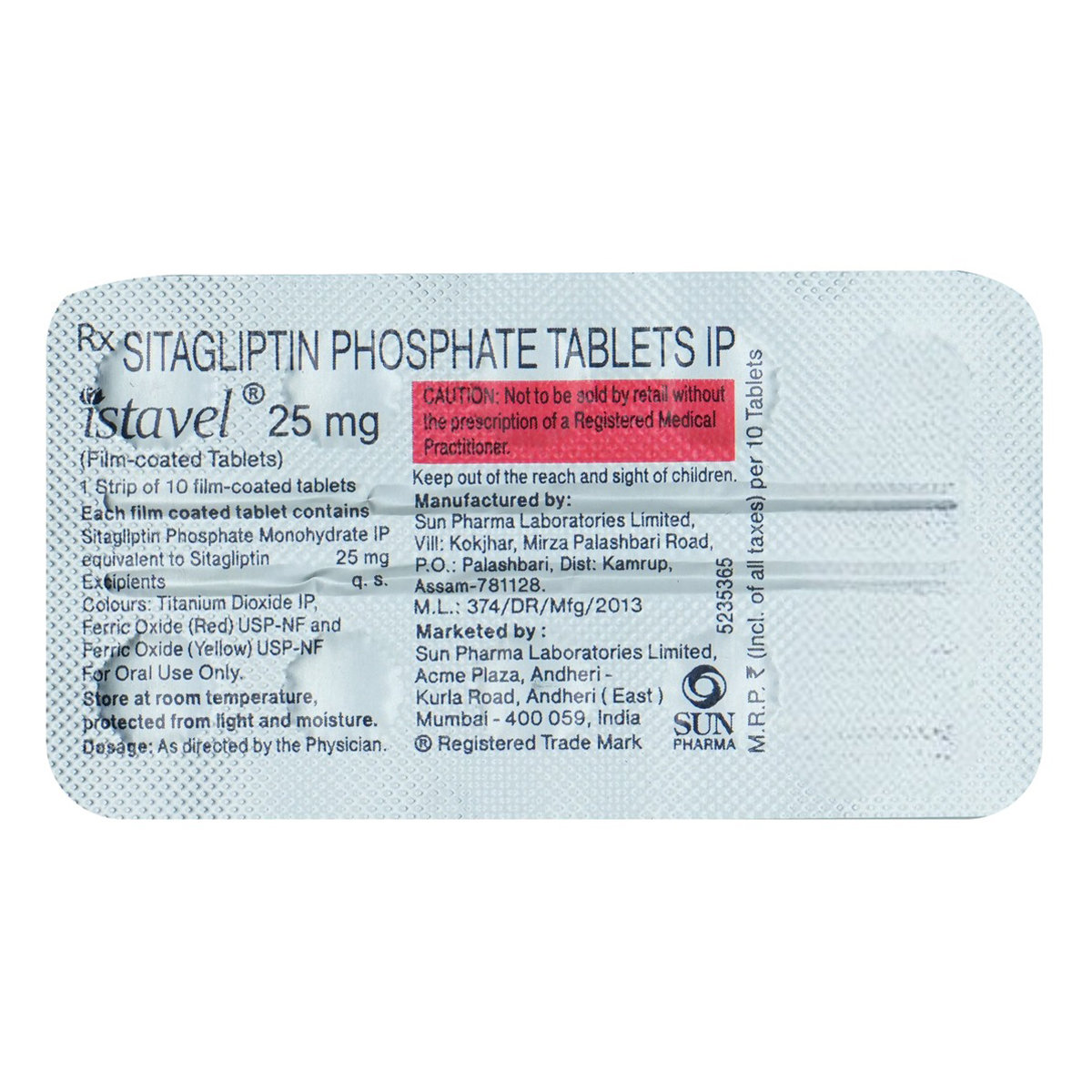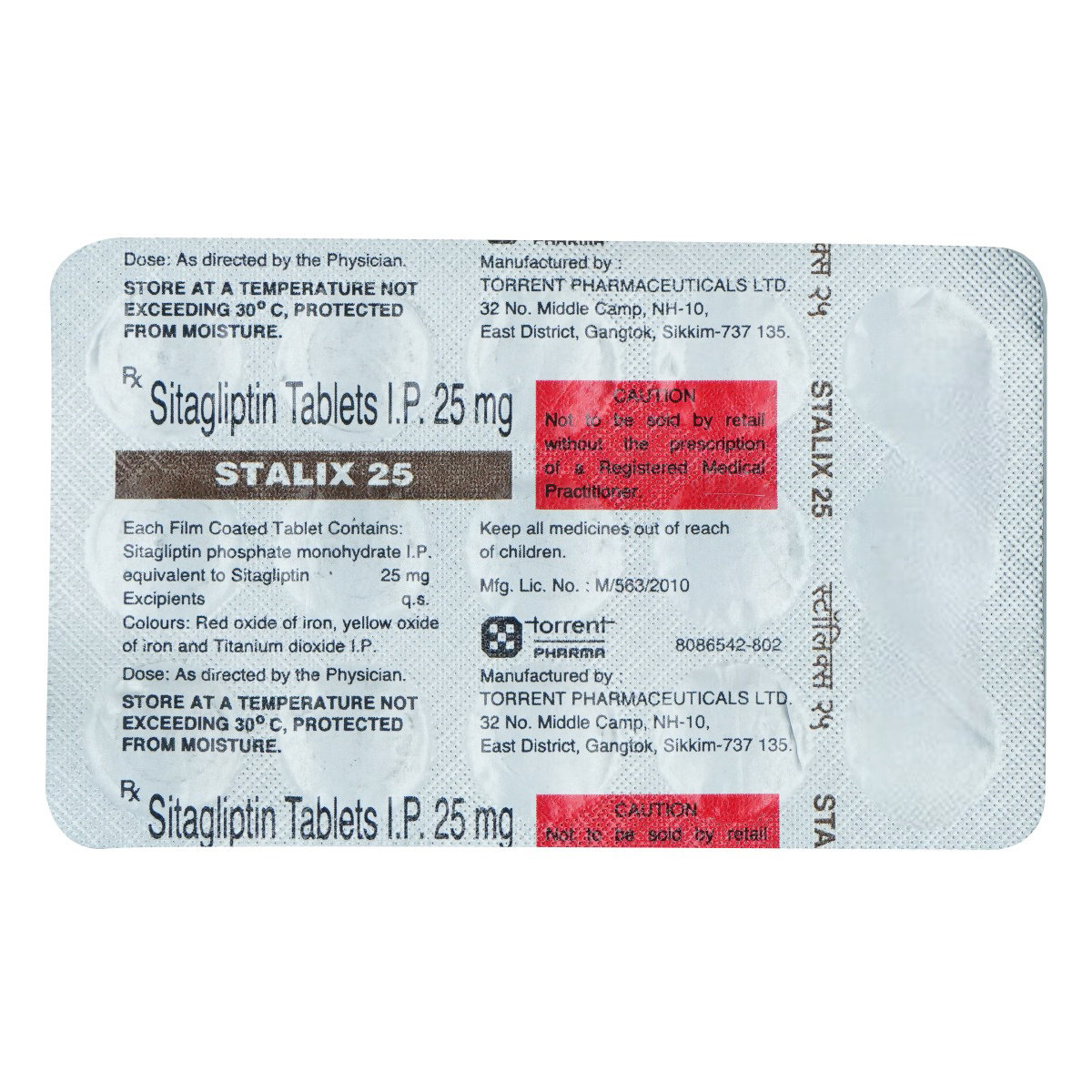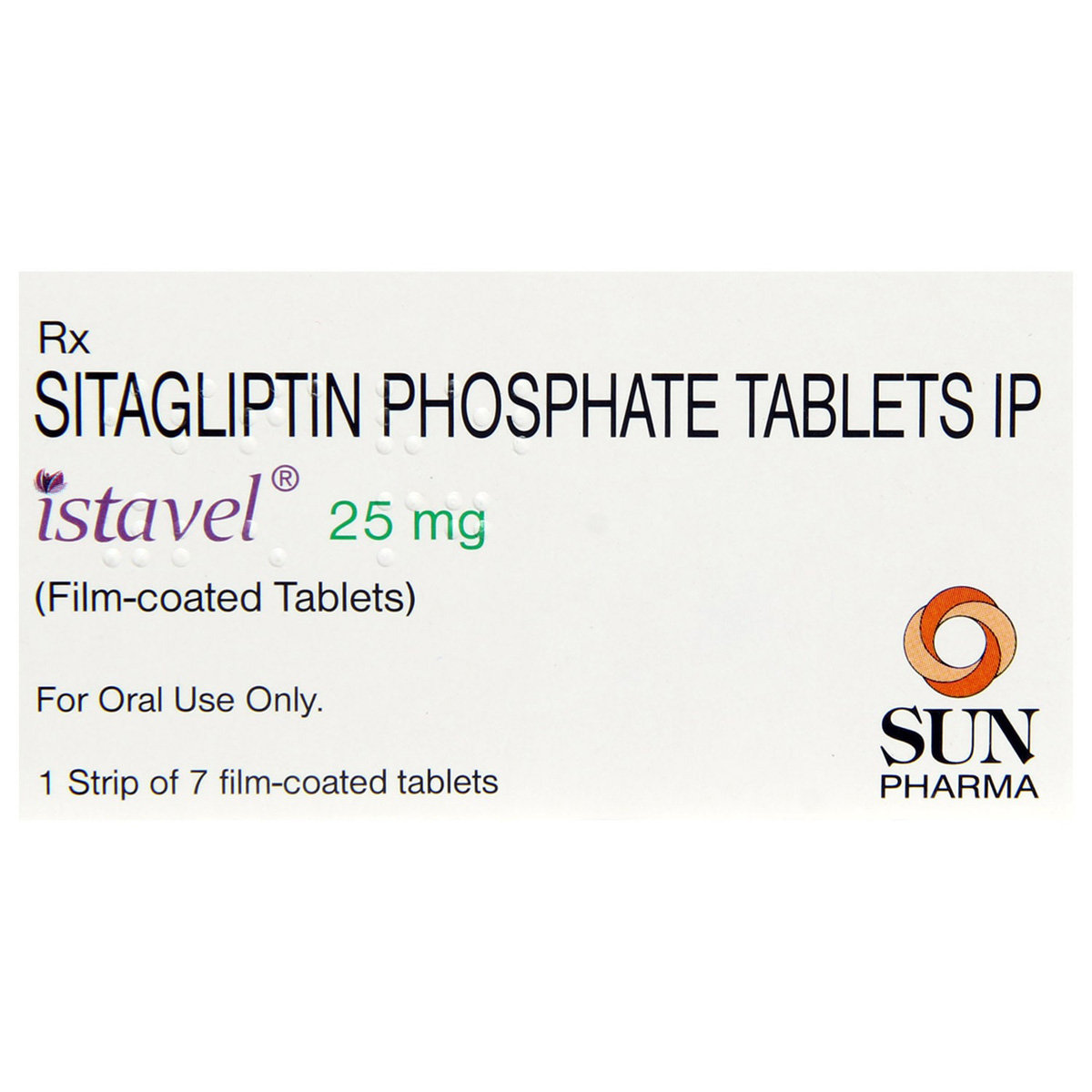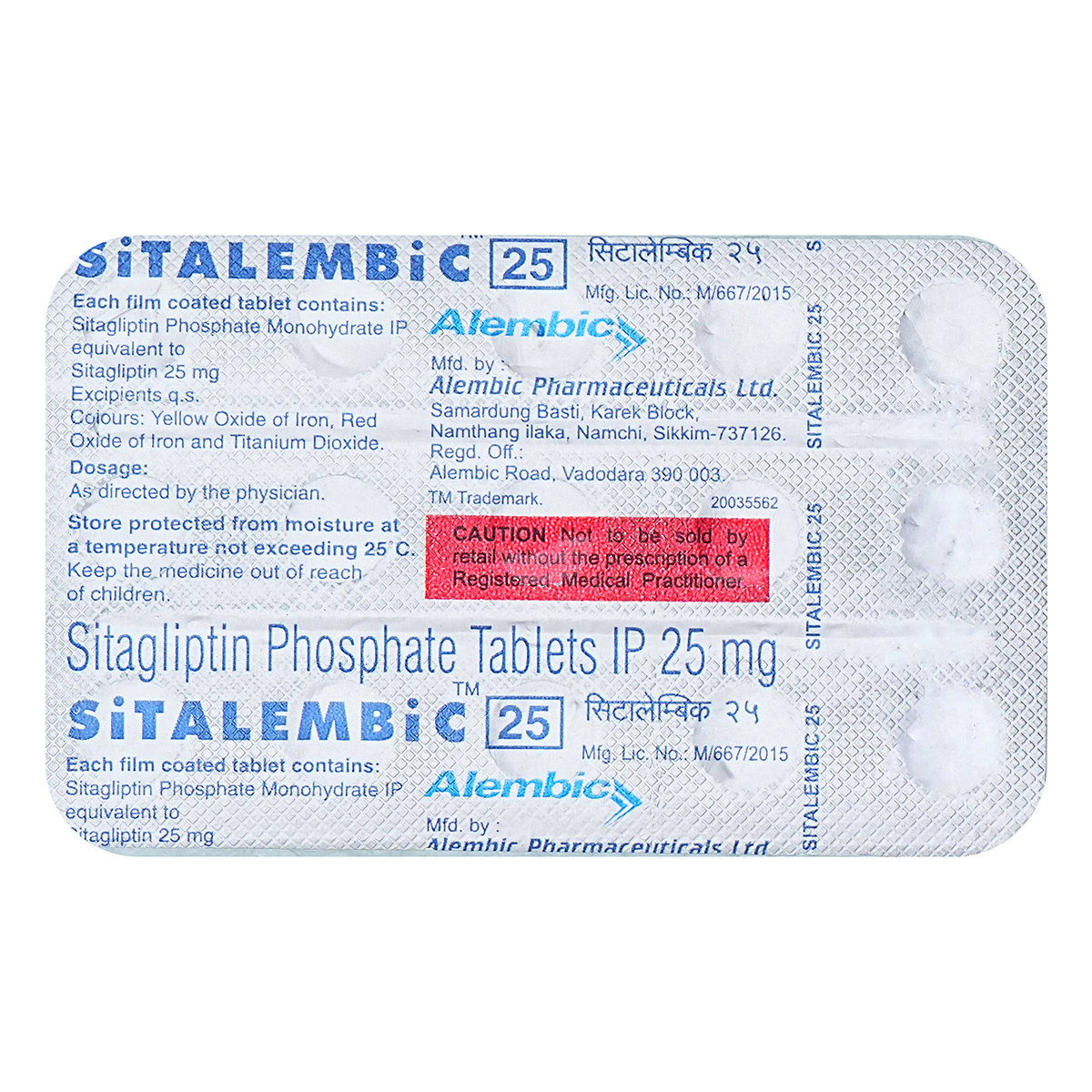Sitaxa 25 mg Tablet 15's
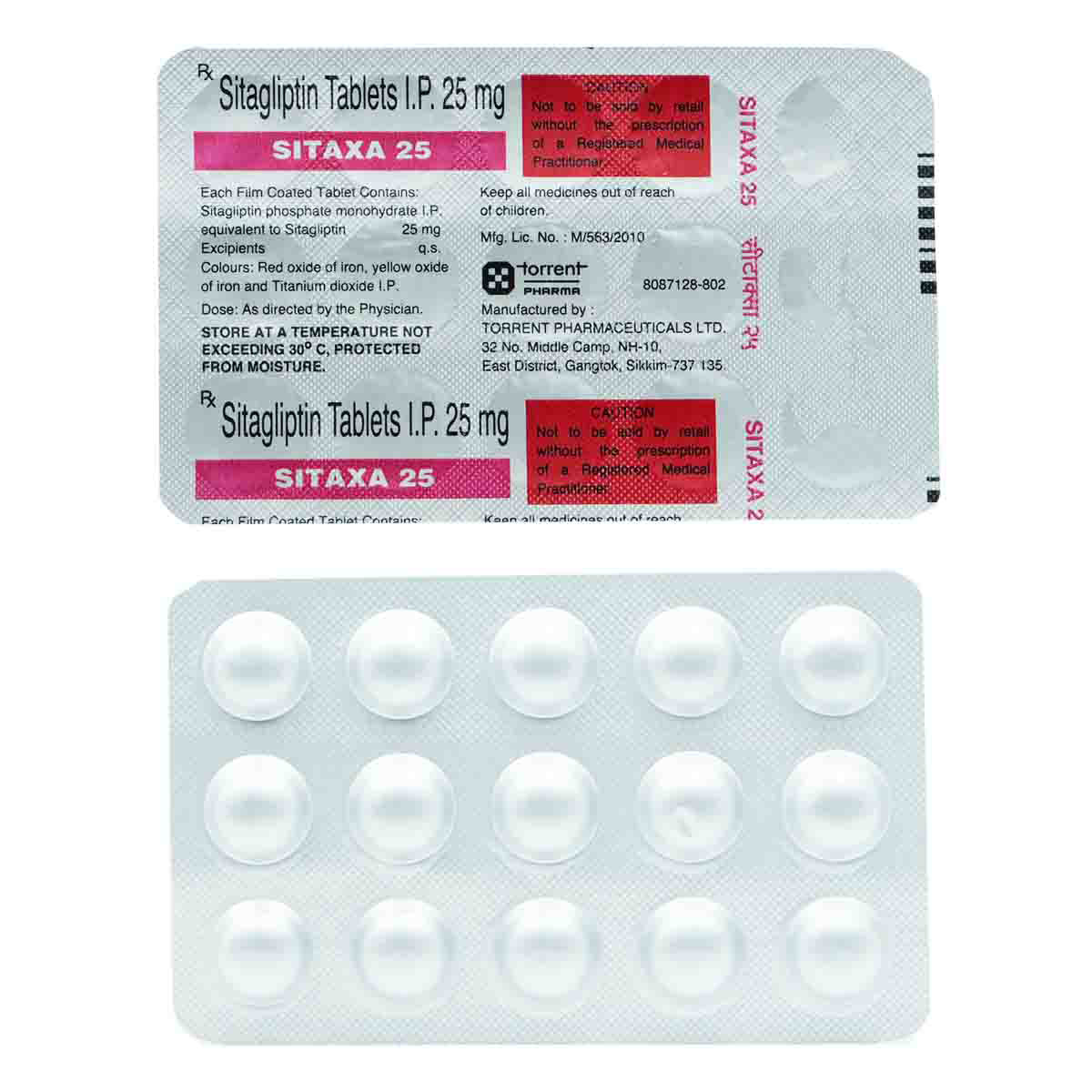
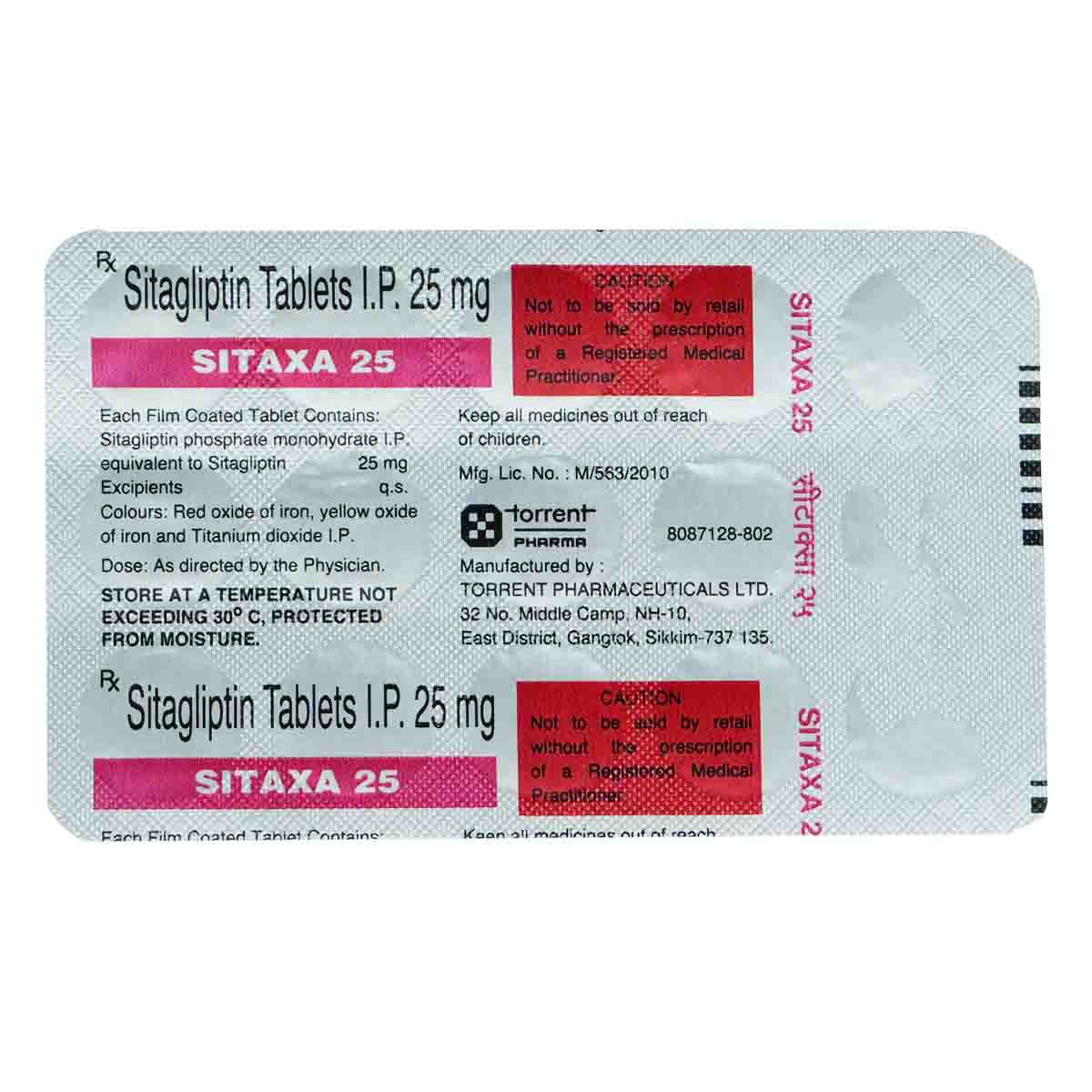
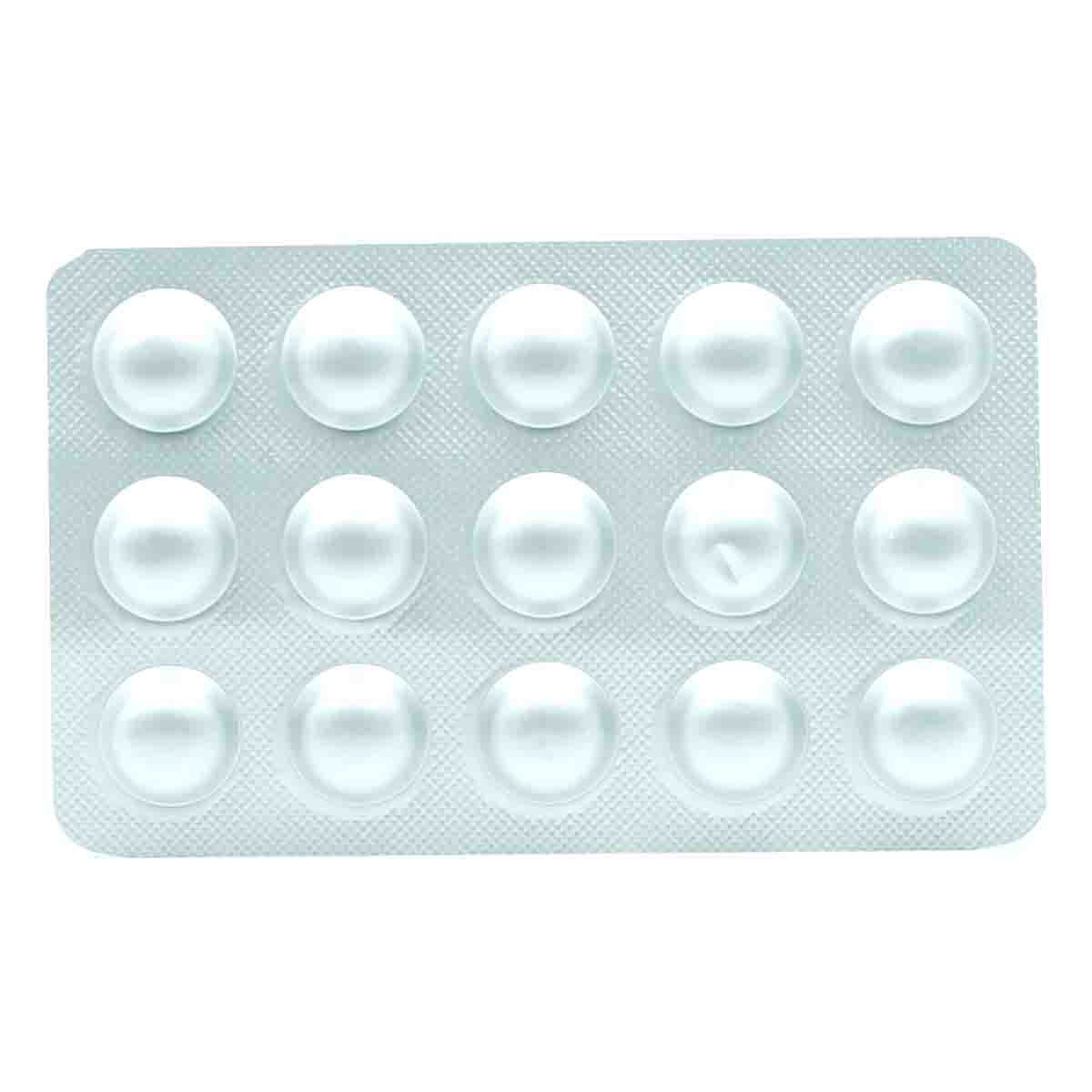



MRP ₹163.5
(Inclusive of all Taxes)
₹24.5 Cashback (15%)
Provide Delivery Location
Online payment accepted
 Prescription drug
Prescription drugWhats That
Composition :
Manufacturer/Marketer :
Consume Type :
Return Policy :
Expires on or after :
About Sitaxa 25 mg Tablet
Sitaxa 25 mg Tablet belongs to the class of dipeptidyl peptidase-4 (DPP-4) inhibitors used in treating type 2 diabetes in adults. Sitaxa 25 mg Tablet is prescribed for the condition of type 2 diabetes when diet and exercise alone cannot control their blood sugar levels. It is the first-line therapy for patients with type 2 diabetes that restores the body's response to insulin. Insulin is the hormone that controls sugar levels in your blood. People with type 2 diabetes either do not produce enough insulin, or the insulin produced cannot perform its function in the body (insulin resistance). Middle-aged or older individuals are most likely to suffer from type 2 diabetes, so it is also known as adult-onset diabetes.
Sitaxa 25 mg Tablet contains sitagliptin. Sitaxa 25 mg Tablet work by blocking the action of DPP-4 (an enzyme which destroys the hormone 'Incretin'). The enzyme 'Incretins' helps produce more insulin only when required and reduces blood sugar produced by the liver when not needed.
Sitaxa 25 mg Tablet should be taken with food or an empty stomach. However, it should be taken at the same time of the day each time for the best results. For better advice, your doctor will decide what dose should be taken, which can change quickly depending on your condition. The most common side effect of Sitaxa 25 mg Tablet is hypoglycaemia (low blood glucose levels), upper respiratory tract infection, nasopharyngitis (infection of the nose and throat with common cold) and headache.
Sitaxa 25 mg Tablet should not be used in patients with type 1 diabetes and for treating diabetic ketoacidosis. Sitaxa 25 mg Tablet should not be stopped even if you feel better without consulting your doctor as the sugar levels change. If you stop taking Sitaxa 25 mg Tablet abruptly, it may increase your sugar levels which could further increase the risk of eyesight loss (retinopathy), kidney (nephropathy) and nerve damage (neuropathy). Sitaxa 25 mg Tablet should not be taken if you have severe kidney or liver disease. Please inform your doctor if you have any heart disease or planning to get pregnant or breastfeed. Prolonged intake of Sitaxa 25 mg Tablet may cause acute pancreatitis (swollen pancreas) and critical kidney problem. Increased risk of hypoglycaemia (low blood sugar level) can occur when Sitaxa 25 mg Tablet is added to other anti-diabetic agents or insulin therapy. In this case, your doctor may adjust the dose of Sitaxa 25 mg Tablet . Severe allergic reactions might occur in some patients taking Sitaxa 25 mg Tablet like anaphylaxis, angioedema (swelling under the skin), and exfoliative skin conditions, including Stevens-Johnson syndrome. The safety and efficacy of Sitaxa 25 mg Tablet in children under 18 years have not been established, so it should not be given to them. Patients taking digoxin (a heart medicine) with Sitaxa 25 mg Tablet should be closely monitored as severe drug interaction has been observed.
Uses of Sitaxa 25 mg Tablet
Directions for Use
Medicinal Benefits
Sitaxa 25 mg Tablet work by blocking the action of DPP-4 (an enzyme which destroys the hormone ‘Incretin’). The enzyme ‘Incretins’ helps produce more insulin only when required and reduces blood sugar produced by the liver when not needed. Thus, Sitaxa 25 mg Tablet plays a vital role in controlling blood sugar levels and prevents serious complications of diabetes like eyesight loss (retinopathy), kidney (nephropathy), nerve damage (neuropathy), diabetic foot ulcer and delayed wound healing.
Storage
Drug Warnings
Tell your doctor before consuming Sitaxa 25 mg Tablet if you have allergic reactions to sitagliptin, any medications, foods, or any components present in Sitaxa 25 mg Tablet . Prolonged intake of Sitaxa 25 mg Tablet may cause acute pancreatitis (swollen pancreas) and critical kidney problem. Increased risk of hypoglycaemia (low blood sugar level) can occur when Sitaxa 25 mg Tablet is added to other anti-diabetic agents or insulin therapy. In this case, your doctor may adjust the dose of Sitaxa 25 mg Tablet . Severe allergic reactions might occur in some patients taking Sitaxa 25 mg Tablet like anaphylaxis, angioedema (swelling under the skin), and exfoliative skin conditions, including Stevens-Johnson syndrome. The safety and efficacy of Sitaxa 25 mg Tablet in children under 18 years have not been established, so it should not be given to them. Patients taking digoxin (a heart medicine) with Sitaxa 25 mg Tablet should be closely monitored as severe drug interaction has been observed.
Diet & Lifestyle Advise
- Invest at least 150 min of your week in moderate-intensity physical activity or one hour and 15 minutes of high-intensity exercise every week.
- Losing weight gradually to achieve a healthy body mass index (18.5 to 24.9).
- Replacing refined carbohydrates-containing foods with whole grain foods and increasing intake of fruits, veggies, and other fibre-enriched foods.
- Reduce saturated fat intake (or hidden fats) in food like chips, crisps, pastries, biscuits and samosas. Choose omega-3 fatty acid-containing oils for daily cooking. For frying, you can use palm oil, mustard oil, groundnut oil, rice bran oil, and safflower oil.
- Avoid taking too much stress as it may elevate your blood sugar level. You can adopt stress management techniques like mindfulness to control stress-related blood sugar changes or meditation or yoga.
- Opt for low-fat dairy products (low-fat yoghurt, fat-free milk and cheese etc.).
- Keep your blood pressure as normal (140/90) as possible as it reduces the risk of cardiovascular diseases in diabetes patients.
Side Effects of Sitaxa 25 mg Tablet
- Hypoglycaemia (low blood glucose levels)
- Upper respiratory tract infection
- Nasopharyngitis (infection of nose and throat with common cold)
- Headache
Habit Forming
Therapeutic Class
Product Substitutes
Author Details
We provide you with authentic, trustworthy and relevant information
FAQs
Drug-Drug Interactions Checker List
- BUPROPION
- CEPHALEXIN
- CIPROFLOXACIN
- CIMETIDINE
- DIGOXIN
- DOLUTEGRAVIR
- GLYCOPYRROLATE
- TOPIRAMATE
- LAMOTRIGINE
- RANOLAZINE
- ALPHA LIPOIC ACID
- ASPIRIN
- PROTHIONAMIDE
- PEGVISOMANT
Disease/Condition Glossary
Type 2 diabetes is a condition where the body is unable to make sufficient insulin, or the insulin that it makes doesn't work properly or is utilized by our body. This can cause high blood sugar levels (hyperglycaemia). Symptoms of type 2 diabetes include increased thirst, frequent urination at night, slow wound healing, increased hunger, fatigue, and blurred vision. In some cases, weight gain may occur, while in rare cases, weight loss may be observed. The complication of type 2 diabetes also include neuropathy (nerve problems), nephropathy (kidney problems), retinopathy (damaged retina of eyes or blindness), loss of limbs, sexual dysfunction, and an increased chance of heart attack or stroke.

Have a query?
Buy best Diabetics products by
Torrent Pharmaceuticals Ltd
Sun Pharmaceutical Industries Ltd
Eris Life Sciences Ltd
Intas Pharmaceuticals Ltd
Lupin Ltd
Micro Labs Ltd
Mankind Pharma Pvt Ltd
Lloyd Healthcare Pvt Ltd
Alkem Laboratories Ltd
Abbott India Ltd
Glenmark Pharmaceuticals Ltd
Cipla Ltd
Macleods Pharmaceuticals Ltd
Wockhardt Ltd
Dr Reddy's Laboratories Ltd
Primus Remedies Pvt Ltd
USV Pvt Ltd
Aristo Pharmaceuticals Pvt Ltd
Emcure Pharmaceuticals Ltd
Alembic Pharmaceuticals Ltd
Ipca Laboratories Ltd
La Renon Healthcare Pvt Ltd
Ajanta Pharma Ltd
Medley Pharmaceuticals Ltd
East West Pharma India Pvt Ltd
Elbrit Life Sciences Pvt Ltd
Corona Remedies Pvt Ltd
Hbc Life Sciences Pvt Ltd
Sinsan Pharmaceuticals Pvt Ltd
Ranmarc Labs
Mitoch Pharma Pvt Ltd
Zydus Healthcare Ltd
Sanofi India Ltd
Akumentis Healthcare Ltd
Fusion Health Care Pvt Ltd
Unison Pharmaceuticals Pvt Ltd
Jubilant Lifesciences Ltd
Novo Nordisk India Pvt Ltd
Tas Med India Pvt Ltd
Blue Cross Laboratories Pvt Ltd
Msn Laboratories Pvt Ltd
Eswar Therapeutics Pvt Ltd
Indoco Remedies Ltd
Q Check Pharmaceuticals
Alteus Biogenics Pvt Ltd
Anthem Bio Pharma
Franco Indian Pharmaceuticals Pvt Ltd
Systopic Laboratories Pvt Ltd
Panacea Biotec Ltd
Zydus Cadila
Biocon Ltd
Edoc Life Sciences Pvt Ltd
Koye Pharmaceuticals Pvt Ltd
Arkas Pharma Pvt Ltd
Diacardus Pharmacy Pvt Ltd
Elinor Pharmaceuticals (P) Ltd
Remedy Life Sciences Pvt Ltd
Saan Labs
Talent India Pvt Ltd
Jarun Pharmaceuticals Pvt Ltd
Capital Pharma
Shrrishti Health Care Products Pvt Ltd
FDC Ltd
Leeford Healthcare Ltd
Nirvana India Pvt Ltd
Elder Pharmaceuticals Ltd
Eli Lilly and Company (India) Pvt Ltd
Glynis Pharmaceuticals Pvt Ltd
Zuventus Healthcare Ltd
Arrient Healthcare Pvt Ltd
Cadomed Pharmaceuticals India Pvt Ltd
Orris Pharmaceuticals
Akesiss Pharma Pvt Ltd
Bal Pharma Ltd
Biochem Pharmaceutical Industries Ltd
Knoll Healthcare Pvt Ltd
Lippon Pharma Pvt Ltd
Morepen Laboratories Ltd
Neucure Lifesciences Pvt Ltd
Opsis Care Lifesciences Pvt Ltd
Wallace Pharmaceuticals Pvt Ltd
Acmedix Pharma Llp
Converge Biotech Pvt Ltd
Erinyle Pharma
Indiabulls Pharmaceuticals Pvt Ltd
Ozone Pharmaceuticals Ltd
Retra Life Science Pvt Ltd
Alvio Pharmaceuticals Pvt Ltd
Geneaid Pharmaceuticals
Heal (India) Laboratories Pvt Ltd
Olcare Laboratories Pvt Ltd
Vasu Organics Pvt Ltd
Kotak Life Sciences
Lakshya Life Sciences Pvt Ltd
Proqol Health Care Pvt Ltd
Sanz Pharmaceuticals
Daylon healthcare pvt Ltd
Mcronus Lifescience Pvt Ltd
Natco Pharma Ltd
Orsim Pharma
Alcohol
Caution
No interaction was found. However, it is advisable not to take or limit alcohol as a precautionary measure.
Pregnancy
Caution
Sitaxa 25 mg Tablet is not suggested during pregnancy since there is insufficient evidence on how it may impact a growing infant.
Breast Feeding
Unsafe
Consult your doctor; there is no substantial research yet on using Sitaxa 25 mg Tablet in breastfeeding/nursing mothers. Sitaxa 25 mg Tablet should be used in breastfeeding mothers only if the benefits outweigh the risks.
Driving
Caution
Sitaxa 25 mg Tablet should not impair your ability to drive, or operate machinery or tools if your blood sugar levels are stable. When your blood sugar levels drop too low, your concentration suffers. If this occurs, refrain from driving or using equipment or tools until you feel better.
Liver
Caution
In rare cases, liver enzyme elevations have been reported in the prolonged usage of Sitaxa 25 mg Tablet . So, if you have or have a history or evidence of any liver-related diseases, please consult the doctor before taking medicine.
Kidney
Unsafe
Acute renal failure has been reported in the patients taking Sitaxa 25 mg Tablet . In severe cases, it sometimes requires dialysis. Hence, dosage adjustment can be recommended in patients with moderate or severe kidney disease and patients with kidney failure (ESRD - end-stage renal dialysis).
Children
Unsafe
The safety and efficacy of Sitaxa 25 mg Tablet in children have not been established.



